
23 minute read
Selfie factories
Examining the rise in popularity of interactive art museums over traditional art museums
Overstuffed, small rooms lead to the next, with young attendees posing toward cameras, large, colorful sculptures flowing throughout and samples of ice cream flavors provided around every corner. For $38, junior Sophia Chen and her friends toured the Museum of Ice Cream in San Francisco, which serves both ice cream and the perfect backdrops for social media posts.
Advertisement
“Take your time, get your photos,” are the first words attendees hear from the staff when entering the Museum of Ice Cream. Installations like this are spaces for people to take photos, and Chen credits this trend to the “Instagram era.”
The aesthetics of the bright pink and white colors seen throughout the ice cream installation, along with the different themes inhabiting each exhibit, provide visitors with numerous photo opportunities. Since its opening in 2017, the building has captured the attention of almost 2,000 people every day.
Chen went to the museum over the summer to celebrate her birthday. It was one of the many things they did that day, but Chen says she wasn’t quite satisfied. The bright lights and the “immediate sense of excitement” that greeted her at first didn’t last throughout the tour, and Chen attributes most of the fun she had to friends who accompanied her rather than the museum itself.
“You get the immediate sense of excitement, then you walk in and people hand you ice cream, and it’s definitely a welcoming, happy experience,” Chen said. “As a person who doesn’t care that much about [taking] photos, personally, I didn’t think it was worth [the $38], but it was to celebrate our birthday and it was with a group of my friends, and I did have fun.”
Chen says with her background in art history and being an artist herself, the interactive style of the museum did not meet her standards of an art gallery she would find interesting, and it is something she doesn’t consider to be art.
“Is the Museum of Ice Cream even art?” Chen said. “Reading into the work BY AYAH ALI-AHMAD
of famous artists and studying the time periods and knowing that there’s history behind that piece of art is more compelling to me than a giant cherry … I think with interactive museums like Museum of Ice Cream, it is fun, but there’s no deeper meaning. There’s no meaning to the actual artwork besides the fact that it’s colorful and it’s fun.”
On the other hand, art teacher Brian Chow says that critics should welcome the rising trend of pop-up art exhibits that serve the purpose of being interactive for visitors. As a father of three, Chow says he has struggled with keeping his kids interested in art when visiting established art museums like San Fransciso Museum of Modern Art, but says experiences like these help.
“How do you swing the deal for a kid to be engaged in work like that? Well, have a hands-on art activity,” Chow said. “I think more engagement is fun and that’s going to help people get engaged in their [artwork] and learn about it. There’s a controversy or critics in terms of embracing this, but I think they’re a little too old school in that aspect of it.”
Chow says if established art museums were to implement what interactive exhibits are achieving with hands-on activities, visitors would engage more with the artwork and potentially learn more.
“When we [think] about the museum, how do you design the experience for people to come to it? Because that’s what you’re trying to do,” Chow said. “You’re not just trying to house [the art] to keep it safe and archive history, you want people to see and engage ... They don’t have to come preloaded with any information, they can use technology or these [expierences] to then engage in the work and then they can be connected to the work in a different way.”
But mixing museum styles and purposes isn’t ideal to Chen, who says that the two should stay segregated so that established museums can remain recognizable to the people who regularly attend them, like herself, and preserve the history she deems more important than an attraction for social media attention.
“I do think that there should be a difference between interactive art museums and art museums,” Chen said. “I think art museums [like SFMoMA] are definitely more important for preserving that historical context and the historical styles of pieces of art from [SFMoMA] is more important than [interactive] art that people just want to take photos with.”
One of Chow’s art students, senior Kiren Balakrishnan, says that she likes the idea of mixing interactive and traditional museums to attract all kinds of people. However, she says that this strategy only works when the mixing takes place in already established museums like MoMA because the Museum of Ice Cream will only use it for profit advantages.
“I feel like it’s cool that MoMA, both SFMoMA and the one in New York, does have certain areas that are meant [to] take your phone out and take photos and be cute,” Balakrishnan said. “And then they have areas that are just like a traditional art museum, [and] it’s a nice mixture. So you get a taste of a regular art museum experience, IS THE MUSEUM OF ICE CREAM EVEN ART? JUNIOR SOPHIA CHEN
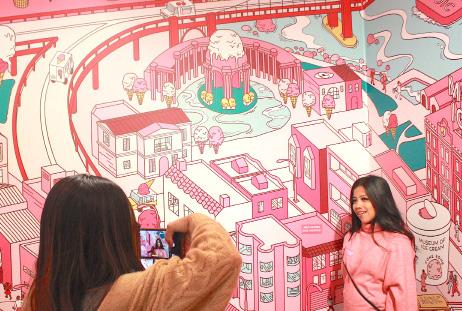
but you also attract people with the social media buzz ... You can tell that [the Museum of Ice Cream is] trying to capitalize on our crazy obsession with social media, because SFMoMA is a genuine art museum and that’s all [the museum is] there for.”
Chow says that the controversy over these new pop-up installations isn’t entirely realistic, as they don’t threaten traditional museums, and either way, people will likely share their life experiences online anywhere they go.
“This is a museum of ice cream, so have some fun with that,” Chow said. “What’s the drawback to having an immersive exhibit? That someone’s taking a picture in front of the artwork? It’s not competing with SFMoMA or the icons in the 20th Century ... Who cares if someone takes a selfie with their favorite artwork? They’re going to do it anyway.” A child plays in the sprinkle pit. e

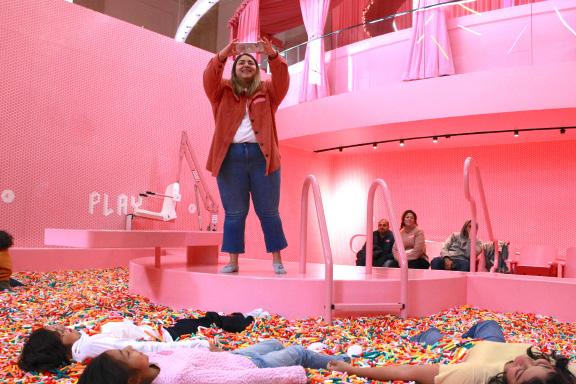
PHOTOS | AYAH ALI-AHMAD
GREEN THUMBS

Teachers and students share their passion for gardening
BY CHARLOTTE CHUI
JUNIOR TANUSH TALATI
For junior Tanush Talati, a seventh grade visit to a bonsai garden in Washington D.C. sparked his passion for gardening.
“Ever since that, gardening and plants really interested me,” Talati said. “We always had a garden at home since I was young, but my interest in maintaining it and expanding it really started after that point.” Before, Talati’s parents mainly grew flowering and ornamental plants, like roses and tulips, but Talati chose to add fruiting plants, like lemon, avocado and peppers. His family typically uses the flowers to decorate their house and the fruits and vegetables to make recipes, like lemonade or spices with the peppers.
Talati feels one of the most difficult parts of gardening is dealing with the winter, due to the weather conditions. Insects and pests also pose a challenge, though one pest in particular came as a surprise.
“When we had carrots, a lot of the times, they’re dug up,” Talati said. “We finally found out there were squirrels digging underneath them and eating the carrots. We didn’t really try to stop them because the carrots were just planted for fun mostly, and so it was just really cool to see other animals.” Though Talati primarily views gardening as a way to destress, he also enjoys seeing his efforts pay off. Some plants, like the lemon tree, were bought from the store, then planted, but Talati finds it especially rewarding to see the whole process of a plant growing.
“For our avocado, we didn’t buy it from somewhere,” Talati said. “It was actually grown from a seed [after we ate the avocado], and it’s been a year and a half. It’s really interesting to see it grow from a seed to almost two feet tall, so it’s something that I’m proud of.” ENGLISH TEACHER DAVID CLARKE
The summer before he left for college, English teacher David Clarke worked for a landscape architect. The architect would design the plan; his landscaping crew would create it. For three summers, Clarke was part of the crew, charged with tasks ranging from installing the pipes to putting in the plants.
As Clarke moved to different places with his now wife, they started gardening. He would build; his wife would plant. Their current house was a fixer-upper, so he saw their house and yard as a “blank slate.” Over the past 20 years, their garden has amassed plants ranging from annuals to flowering perennials, succulents to tropical plants, vegetables to fruit trees (like citrus, nectarine, fig and apple) to 8-foot vines. They don’t have a lawn anymore but I THINK OF [PLANTS] AS BEING SORT OF LIKE PROGRAMS IN SOME SENSE. THEY’RE JUST REALLY COMPLEX SORT OF ALGORITHMS. ENGLISH TEACHER DAVID CLARKE
PHOTO USED WITH PERMISSION OF DAVID CLARKE
“various evolving displays of pots” instead. Clarke says that deciding how to lay out the garden is a design-oriented process.
“Landscaping really has two phases,” Clarke said. “The first phase is putting in the basic structure. It’s like designing a template for a publication or something like that, which I’ve done too, so you have to design a basic structure and then there’s putting things within that structure, so it’s very creative. There’s a lot of long-term thinking involved. It’s constantly changing.” The first phase — construction — usually takes place over the summer. Major construction work can take him anywhere from a week to a month. The 12-by-40 foot greenhouse he built, for example, took about four weeks and now stretches along the side of the house.
As for the second maintenance phase, Clarke says that on a good day, when it’s not wet, he and his wife will spend six to eight hours out in the garden. They prune, re-pot and plant. Typically, Clarke handles the heavy labor, while his wife handles the vegetables and annuals.
Clarke has also set up a weather station, which he uses to monitor wind, temperature variation and precipitation, then adjusts accordingly with what the plants need and how he takes care of them.
“I think of [plants] as being sort of like programs in some sense,” Clarke said. “They’re just really complex sort of algorithms and so depending on what you do, they will react in a particular way.”
Clarke finds that growing tropical plants, like lantana and hibiscus, in this area is particularly interesting. In tropical climates,
these plants typically flower year-round, but develop a different growing habit here. “After the last frost, we just whack [the hibiscus and lantana] all the way back to the ground,” Clarke said. “They look like they’re dead, and they’ll just come back. It’s constantly interesting to think about all the different ways that plants have adapted just like animals, to their environment and filled a particular niche. You’re just trying to figure out what that niche is, and adapt it to the environment which you’ve given it.”
Clarke feels gardening rewards patience, as it requires research into a particular plant’s needs and careful attention to the environment’s changing conditions. For him, this provides an “intellectual challenge,” which is just one factor behind why he enjoys gardening. “I like it because I’m a very visual person, but I’ve done a lot of heavy manual labor as well, and I also like something that’s intellectually challenging, it gets you outside,” Clarke said. “The other part of it too is that it’s something that my wife and I do together. I couldn’t do it by myself, and she certainly couldn’t do it by herself either. The house and yard become something that fulfills a lot of different intellectual and physical and emotional needs that we can fulfill together.” SOCIAL SCIENCE TEACHER PETE PELKEY As a self-proclaimed “plant lover” since he was little, social science teacher Pete Pelkey says bonsai enthusiast Mr. Miyagi from “Karate Kid” was his “hero.” While in elementary school and growing up in Barstow, Calif., Pelkey tended to a small vegetable garden. Now, his current garden has expanded past vegetables. He breaks down his current garden into several sections: fruit, vegetable, ornamental, rose, Japanese and finally, bonsai.
Pelkey has 55 to 60 miniature bonsai displayed on platforms around his garden, laid out like Mr. Miyagi’s garden, he says. Once in a while, he “gets the urge” to add another — it’s “almost an addiction” — and sources them from local nurseries like Yamagami’s or from an East Bay nursery in Sunol, where he buys junipers and pines to convert to bonsai. Sometimes, he buys them from fellow bonsai club members, during their weekly Thursday meetings. “I just bought two really beautiful pieces in October from one of our oldest club members — he’s getting older and sicker, and he can’t take care of his hundreds of trees,” Pelkey said. “One of them has to be about 100 years old, and the other has to be about 60 or 80 years old, and they’ve gone into some decline. I’m going to have to get their health back, but they’re going to be absolutely gorgeous bonsais once again. It’s like having a house and rehabilitating, so it’s a living thing.”
Although Pelkey researches using books, videos (particularly from Japanese bonsai master Masahiko Kimura, who Pelkey calls “one of the world’s greatest bonsai artists”) and club meetings, he says taking care of bonsai also requires being in tune with regional microclimates.
December is a busy month for Pelkey — it’s re-potting time, when the bonsai are dormant. After Christmas, he spent three to five hours each day transplanting and fixing bonsai. February — budding season — is another busy month. Ultimately, Pelkey says the goal is to display them at bonsai shows, like Cupertino’s annual Midori Bonsai Show, held in October.
Even though he plans for the timing and the changing environment, pests or disease can still affect the bonsai. When this happens, Pelkey researches plant diseases PHOTO USED WITH PERMISSION OF DAVID CLARKE BECAUSE IT’S LIVING, THERE’S AN INTERACTION YOU’RE HAVING WITH A LIVING CREATURE THAT HAS SOME CALMING AND STRANGE POTENTIAL. SOCIAL SCIENCE TEACHER PETE PELKEY
and anatomy — “botany, it’s like knowing your biology” — to take care of them.
“It’s kind of like children — you have a favorite one for a little while, and then somebody else becomes your favorite for a little while,” Pelkey said. “It just depends on how much you’re working on it or how it’s adjusting to the world at the moment. Certain ones, if they’re sick, they take on more concern for a while, and then when they’re healthier, you don’t have to be as concerned with them.”
The “enduring” nature of bonsai also appeals to Pelkey. Just as some of his bonsai were passed on to him from a club member to be shaped by his hands, Pelkey’s bonsai will likely be passed on to others after him, shaped by the next owner. “Most of the bonsai I have will outlive me for hundreds of years,” Pelkey said. “What I start now, somebody else will put their hands on and modify, modify, modify. If humankind lives another three or 400 years, it’s a good chance somebody’s going to be holding on to this tree that I once started as a bonsai, which is a continuity that is just amazing to me.”
Pelkey sees building bonsai as a form of art, one that’ll continue to grow and evolve. “Bonsai is like art and science that melds together into something beautiful,” Pelkey said. “When you finish a tree — you never finish a tree, it’s always a work in progress — you step back after you’ve cut the tree and bent the tree and fed the tree and you see how beautiful that tree is. It’s like finishing a painting. It’s the same kind of thrill, of knowing you have created something that wasn’t there before.” e
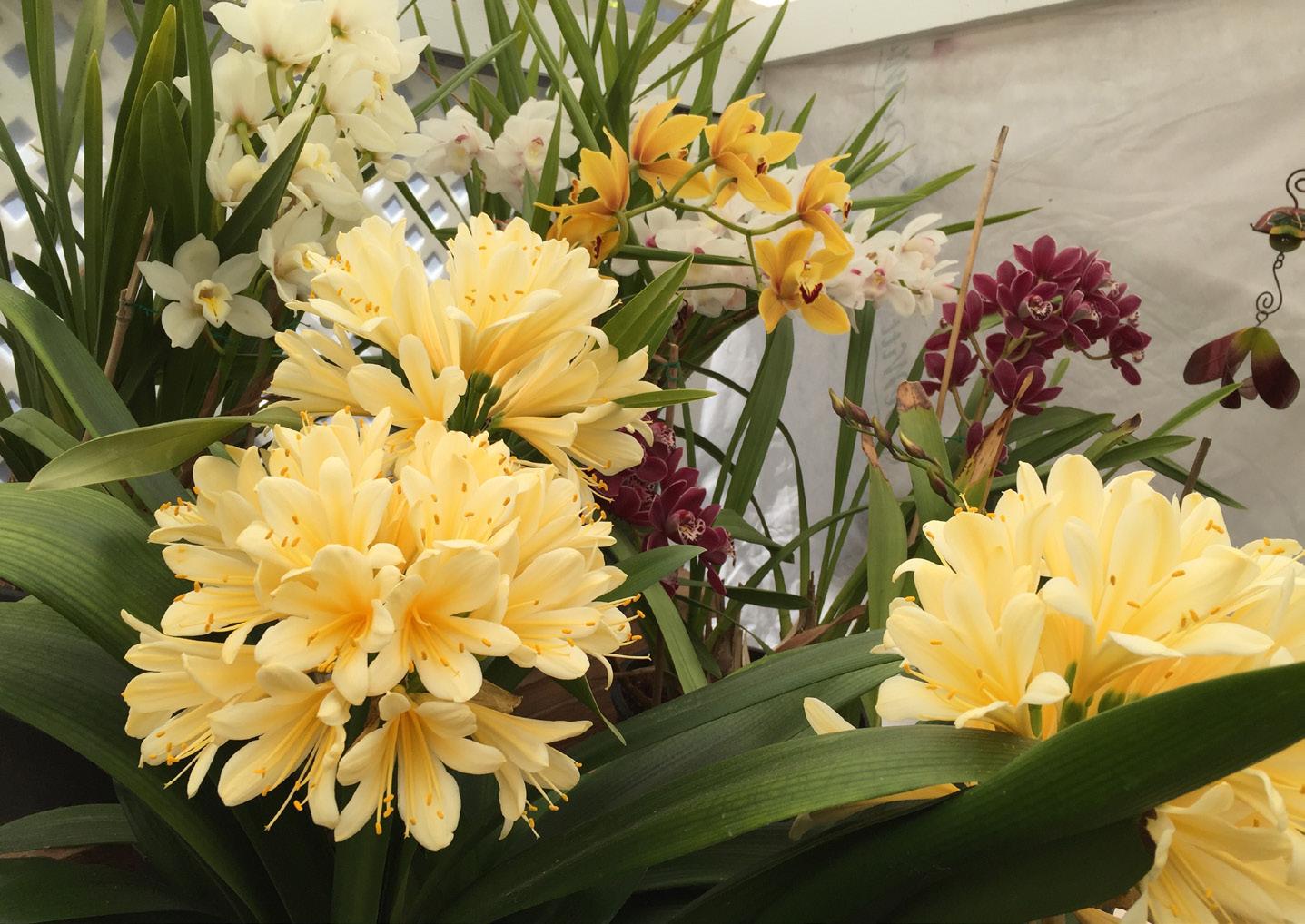
SPIRI OF SONG

BY ADITI DIXIT AND LANCE TONG A ter entering the Emmanuel Presbyterian Church in San Jose on a late Saturday afternoon, youth pastor Brian Hwang leads a prayer to start the weekly practice for the middle and high school musicians who are part of their church’s praise team, a group that performs worship music every Sunday during service. After prayer, they split into two groups. One group heads to a room to practice its set for the following week, while the other group stays in the auditorium to do run-throughs on stage for the service the next day. Senior Yoanna Lee and the praise team — comprised of two guitarists, a drummer, a keyboardist, a lead singer and two backup singers — rehearse their performance in the dimly lit auditorium. Born to two pastors, Lee has been a part of Emmanuel Presbyterian Church since she was young. Lee joined the praise team when she was in eighth grade and became one of a few praise leaders during her sophomore year. As a praise team leader, Lee helps with running weekend practices and updating their group chats with set lists or practices. Lee also learned how to play acoustic guitar to enhance the band’s sound performance. Over her past few years in the group, she has seen how praise is a way for her to express her feelings for her faith in God. “Praise is literally just another type of worship of our God,” Lee said. “When there is a really pump song, people dance and people sing and that’s just kind of what it is. Us as praise leaders and team leaders [lead] people into that space, so they’re not singing to us — we’re all singing to God.” Hwang preaches to the youth at his church and oversees the praise team. He assists the team leaders in how to improve, as well as informs them how much worship time they’ll have. However, Hwang says he leaves technicalities and musical expression mainly to the students. “[The praise team] leads us on a type of musical adoration, worship and expressions towards God [during] the time we commune with him through [the] singing of songs, music and expression,” Hwang said. “So [its] our energy towards God, through the medium of music.” The praise team at Hwang’s church consists of 28 members, including its three praise leaders. The leaders take turns leading and choosing which
members will perform during Sunday’s youth services. The members then learn the setlist, and they hold a final practice the Saturday before the services. Senior Elvis Lang, while not on a praise team, values the impact praise has on his church community at River of Life Church. “Worship is the one time where you’re singing [and] you can reflect on yourself as you do it,” Lang said. “I think [the worship team] goal is to create an environment where we can all focus on yourself spiritually. [It’s especially helpful] in the morning [when] we’re all kind of groggy [because] everyone starts singing and focusing on God.” Outside of their Sunday services, Lee and Lang bring their Christianity and worship to the MVHS campus as officers for the Christian Club. On Fridays during lunch, they hold meetings to connect through their religion, as well as the music that Lee brings to her own group. This music has found a home in modern high schools through clubs like Christian Club. Christian music has modernized over time, incorporating Western genres like pop, rock n’ roll and rap, as opposed to traditional hymnals and church choirs. “Nowadays, you listen to modern-day hip-hop or pop and you hear people praising beauty, praising women, praising men, praising love,” Hwang said. “Humans have always [written] history. We’ve sung stories. We’ve sung about people. We’ve sung about things that we find worth remembering, worth thinking about, worth praising.” While the style of praise has changed, Hwang believes that music can “plant hope” in the individuals listening to it. “God looks at young people and AS PRAISE LEADERS AND TEAM LEADERS [WE LEAD] PEOPLE INTO THAT SPACE SO THEY’RE NOT SINGING TO US — WE’RE ALL SINGING TO GOD. SENIOR YOANNA LEE
God sees a lot of potential — that’s planted hope,” Hwang said. “[Praise is] about activating young people in their gifts, so they can serve God and serve the world and to do it at a young age.” Although Hwang feels that praise helps youth serve God, Lang believes music stands out as a medium for worship because of the sincerity involved. Lang feels that music is inherently emotional, enabling people to feel a greater level of connection with God. “A lot of [people at church] aren’t saved, they’ve been taught everything their whole life but I don’t know if they actually dedicate their lives to God or not,” Lang said. “For a lot of people who are saved though, you can tell by the way that they worship that they actually praise God, that they mean every word that [they sing].”
SCAN FOR MORE COVERAGE
Senior Yoanna Lee practices “Jesus Loves Me” by Chris Tomlin on stage.
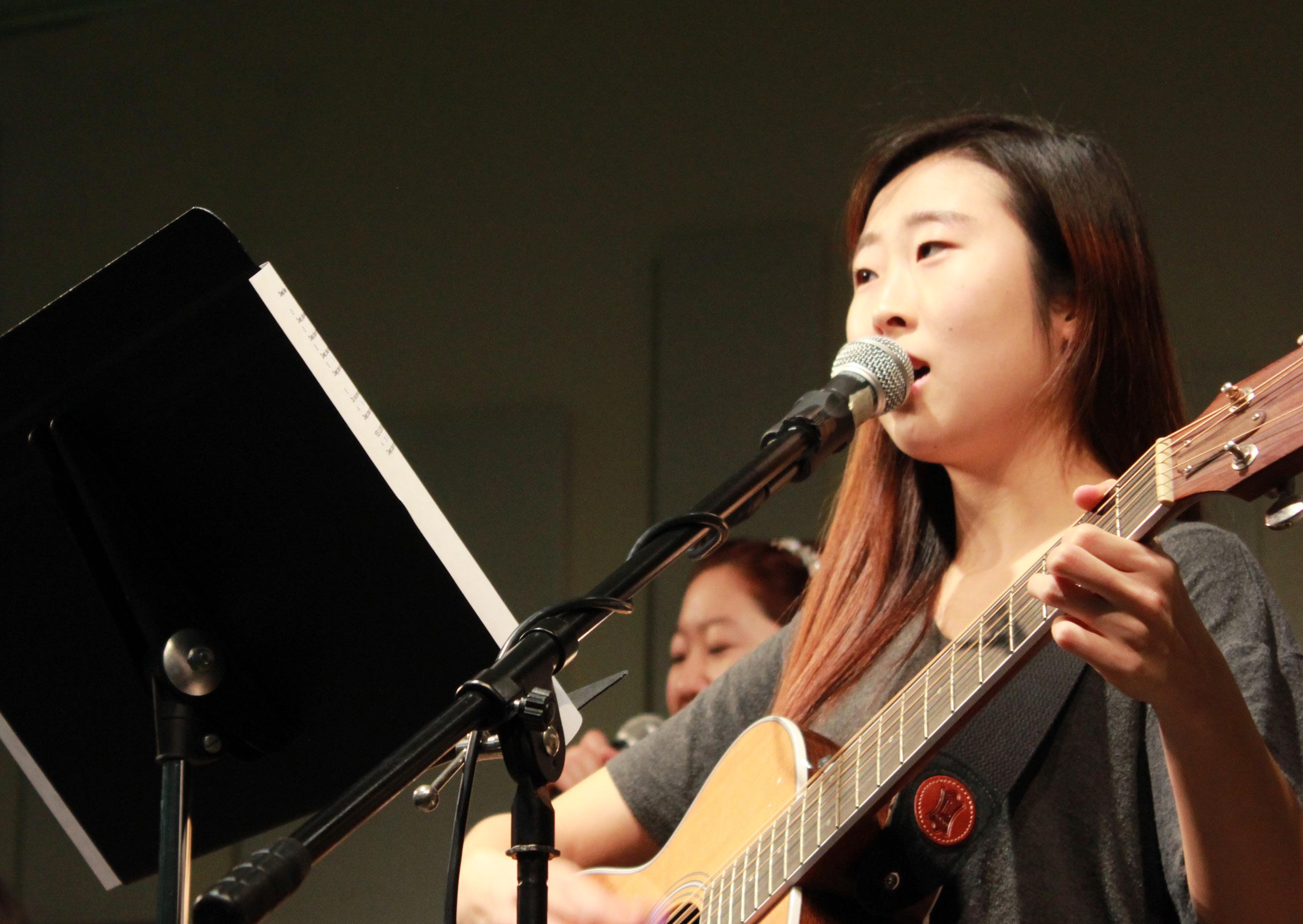
CALLIN THE SHOTS
Referees share about their experiences calling the game
Essential to every sports competition, referees stand out in their striped black and white attire, a whistle dangling around their necks — it’s up to them to call the shots. With eyes on the players, coaches and fans, the referees are responsible for making quick choices to ensure the safety of all.
“I get to stay involved with basketball,” referee Will Mittenthal said. “I get exercise — it’s a good workout. Obviously, I’m getting paid to run, which is not a bad thing. The cons are that you have to put up with coaches and the fans who don’t like the calls you make. You’re only making 50% of the people happy every time you blow your whistle.”
Mittenthal’s love for the game led him to reffing at the high school level for the last six years. Similarly, wrestling coach Kristian Barbo wrestled throughout his high school career and has continued to coach and ref. While he enjoys staying involved with wrestling, he frequently experiences backlash from the teams he works with.
“Many referees like the sports that they ref, but the bad part about it is [that] there are people who yell, scream and bad mouth refs,” Barbo said. “We try to do everything as best as possible, but mistakes happen in any athletics and I think it needs to be addressed a little more.”
Both Mittenthal and Barbo consider the criticism from spectators as the only negative aspect of the job. Parents are heard screaming from the bleachers after unfavorable calls, leading to the refs experiencing highly stressful situations. BY ELENA KHAN AND TABITHA MENDEZ
“The best tool when reffing is your personality to deal with different situations,” soccer referee Eder Del Angel said. “A good referee has to have a lot of situations that happen to him in a game so that he can know how to deal with it in the future games.”
Del Angel has been refereeing since he was 12 years old, and played soccer growing up. What started as a way to make extra money and follow in his father’s footsteps, Del Angel says that he considers soccer a family sport, and refereeing is a way for him to continue being involved since his playing days are now over.
Similarly, Mittenthal started refereeing at age 19, and views reffing as another job opportunity aside from working in finance at Salesforce in San Francisco.
“A kid broke his leg pretty bad. Then one of his teammates like laid across his chest and talked to him while the ambulances came because he was scared and his face turned white ... that was really cool to see.” - Referee Kristian Barbo
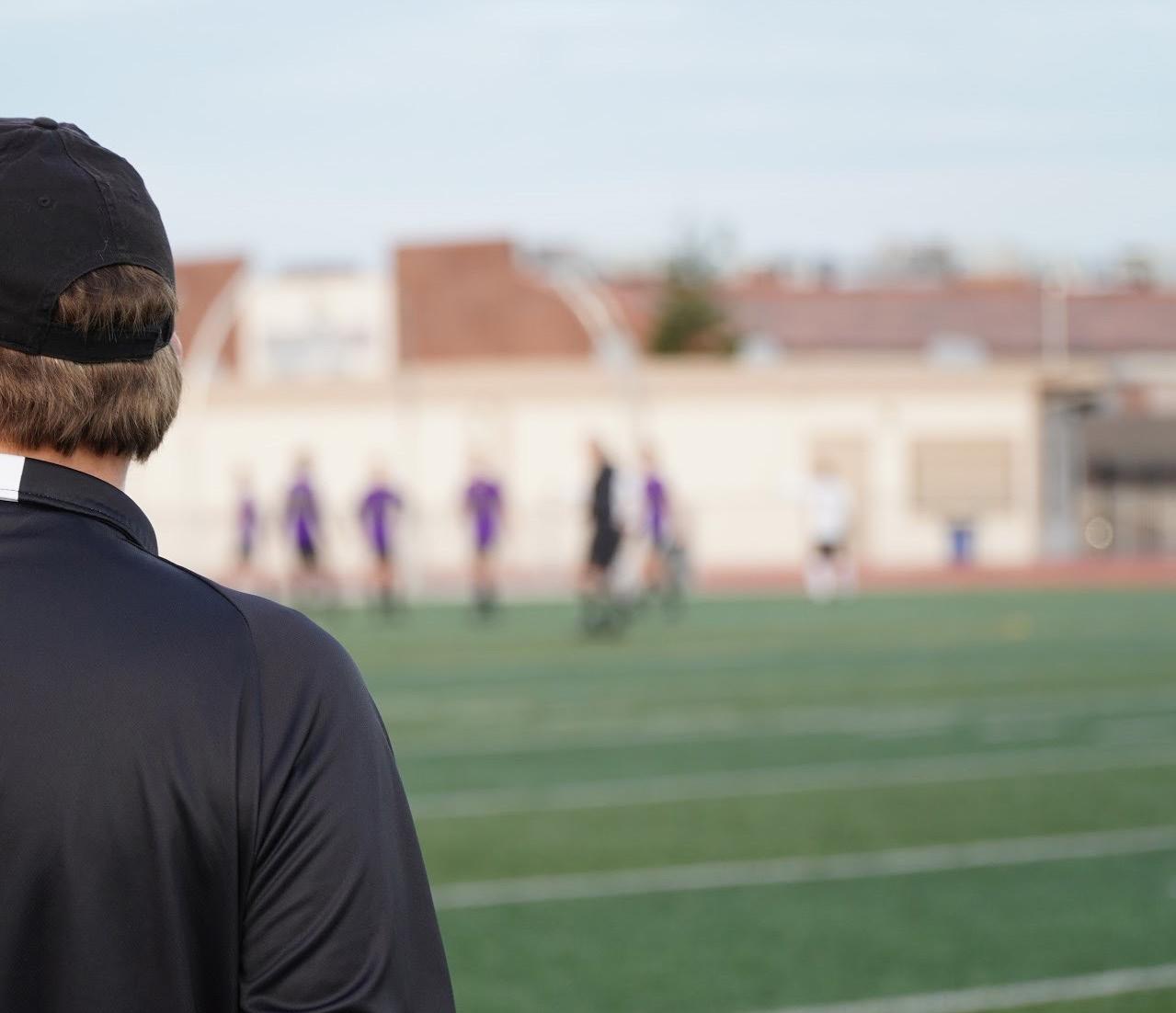
“I’ve seen a person just go on the field with a monkey wrench going after a goalkeeper that had nothing to do with the game.” - Referee Eder Del Angel
However, Barbo referees for a different purpose: his children. Previously, Barbo was a wrestling coach, but he noticed it took up the time he wanted to spend with his kids. As a result, he looked to referring as a less time-consuming way to stay involved. Barbo also holds a job as an agricultural biologist in Santa Clara County.
Although reffing high school teams is a way to maintain his involvement in basketball, Mittenthal sees referring as something he wants to pursue even more in the future.
“I have aspirations to go and potentially referee for higher levels and high school so reffing is a big pro for me [in the future],” Mittenthal said. e
PHOTO | TABITHA MENDEZ PHOTO | TABITHA MENDEZ
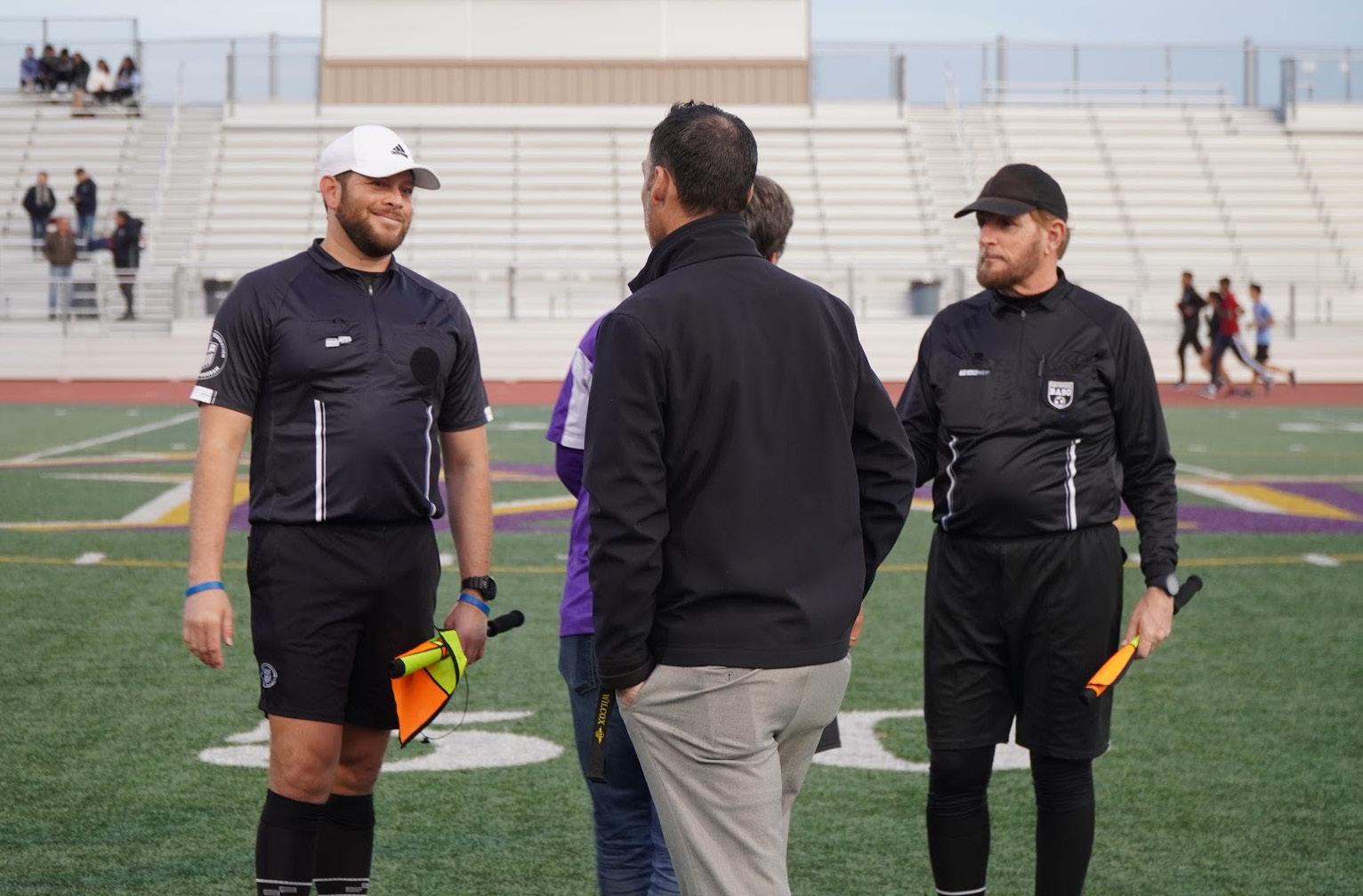
PHOTO | TABITHA MENDEZ
Hiring Coaches

Understanding the process behind how sports coaches are hired
BY HANNAH LEE
1
When a vacancy for a coach arises, the school notifies FUHSD’s HR Department, which then posts the position for a minimum of five days on EdJoin, an educational employment website.
2
Candidates who are interested in the position submit an application through EdJoin.
After the posting closes, the athletic director and administrator overseeing athletics at the school site work with the HR director and senior HR specialist to review the applicant pool and select candidates to interview. 3
The athletic director contacts the HR Department to recommend the successful candidate for hire. The HR Department approves the selection and processes the candidate for clearance to become a coach. 5
4
An interview panel made up of the athletics administrator, athletics director, coach and student athletes conduct interviews at the site and finalists are selected.
ATHLETE OF THE MONTH
BY RUCHA SOMAN ASHLEY LIU
After watching people play at her elementary school and noticing her dad’s keen interest in the sport, senior Ashley Liu started playing basketball in sixth grade. At first Liu would shoot hoops during her time at Lincoln Elementary School, later joining her sixth grade basketball team at Kennedy MS. Throughout middle school, Liu played competitive basketball at Cupertino Hoops while simultaneously playing for National Junior Basketball (NJB) during seventh and eighth grade. Liu continued her basketball journey in high school where she not only played with the MVHS team but also played with a Foothill competitive league team created by her middle school coach. In 11th grade, Liu transitioned with members of the MVHS team to play Amateur Athletic Union tournaments from spring through fall. Due to her vast experiences, Liu says safety is the biggest difference between school and tournament teams. She claims that school referees care more about safety so they call more fouls while outside of school is more physical. Although Liu does not plan to continue at the collegiate level, she hopes to stay in touch with the sport through intramural teams.





